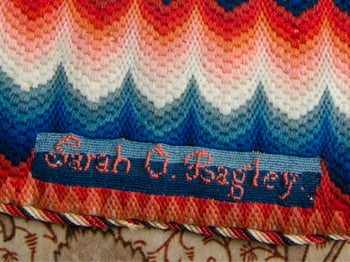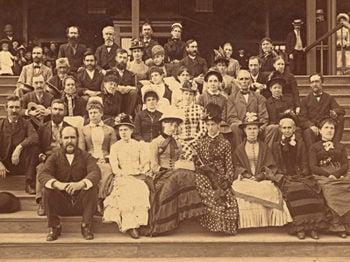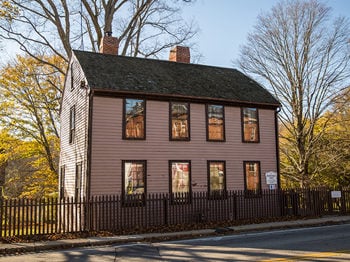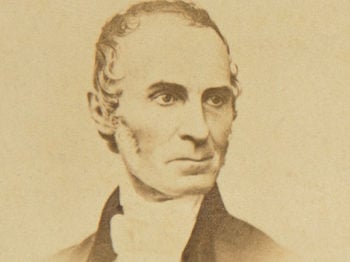DURING THE YEARS immediately following her discovery of Christian Science, Mary Baker Eddy moved from place to place in search of an atmosphere conducive to her earnest study of the Scriptures, the writing of her first manuscripts, and endeavors at teaching her new system of healing. When she arrived at Stoughton, Massachusetts, in the early autumn of 1868, she thought she had found such a place in the home of Alanson and Sally Wentworth. Up to that time, she had been a guest in many homes and rooming houses.
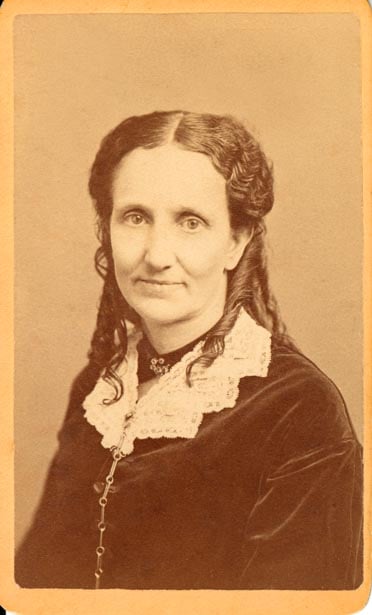
Mrs. Eddy, it will be remembered, was on her way to a Good Templars meeting in Lynn, Massachusetts, on Thursday evening, February 1, 1866, when she slipped and fell on the ice, causing internal injuries which were expected to be fatal. Three days later, her healing occurred after reading the Bible.
The next three years were spent in prayer, meditation, and searching of the Scriptures, but shortly after her healing she found herself alone and with little financial support. The home in which she boarded (23 Paradise Road) in Swampscott was put up for sale and she found it necessary to move .
Her sister, Abigail, offered her income and a house near her own in Sanbornton Bridge (now Tilton), New Hampshire, if she would give up her ideas about God and the system of healing she had discovered. She would not agree to this, but instead spent the summer months of 1866 with various friends in the Lynn-Swampscott area. She boarded with Mr. and Mrs. George D. Clark of 31 Summer Street and frequently visited with other friends.
While living with the Clarks, she met Mr. and Mrs. Hiram Crafts of Avon (then East Stoughton), Massachusetts. Mr. Crafts was a heel finisher who had gone to Lynn to work in the shoe factories for the winter. However, he became so absorbed with the subject of Mind Science that he decided to go to Avon to practice it, and he invited Mrs. Eddy to accompany him and his wife. In November of 1866, Mrs. Eddy brought her own furnishings to their home on Pond Street and taught Mr. Crafts, her first student, her system of healing in exchange for room and board.
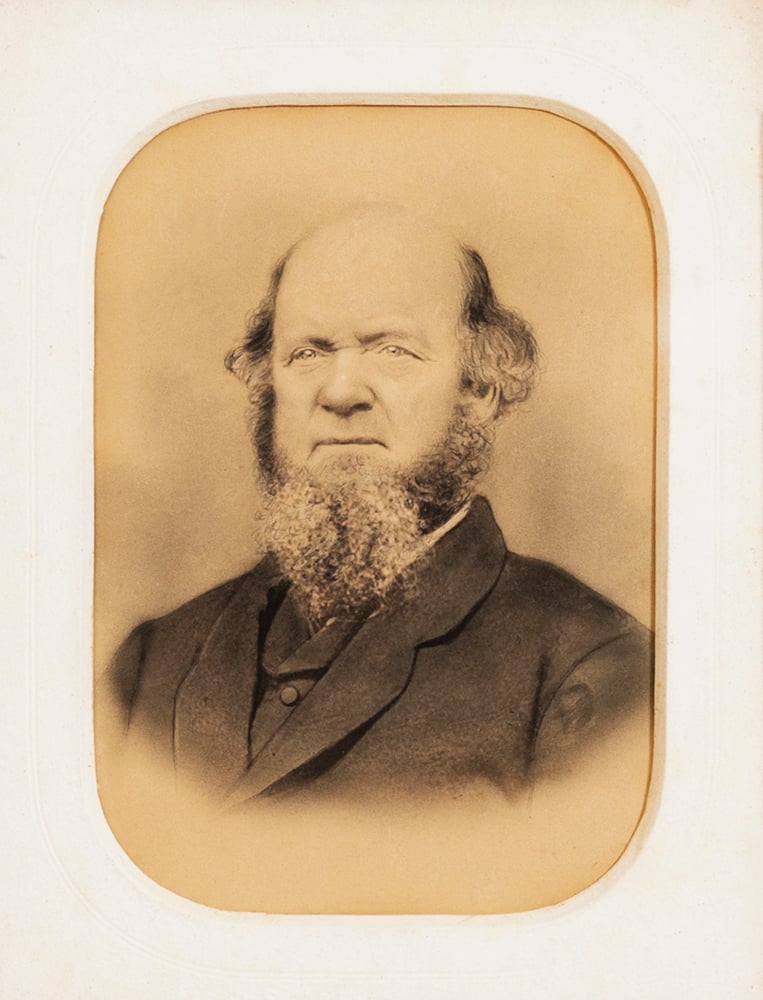
It was during her stay with the Crafts that Mrs. Eddy met Mr. and Mrs. Wentworth. Alanson Wentworth was a farmer and he had a little shoe shop near his house where, like Hiram Crafts, he also worked as a shoemaker.
Knowing of Mrs. Eddy’s presence at the Crafts home, Sally Wentworth brought her daughter, Celia, to be treated for an illness. Mrs. Eddy helped the girl and apparently made an immediate impression on Mrs. Wentworth, for the latter soon invited her to come and live with them.
Mrs. Eddy did not accept the invitation immediately, but apparently did accompany the Crafts on several visits to the Wentworth home. Of the first of these visits, Lucy Wentworth, another daughter, wrote years later: “She was a woman with a fine personality and quickly made friends. When Hiram Crafts brought her to our fireside, we just felt as if an angel had come into our home.”
After a winter in Avon with the Crafts, during which time Mr. Crafts was preparing to practice mental healing, Mrs. Eddy moved with them to the neighboring town of Taunton. They secured rooms on the second floor of a red brick building at 80-86 Main Street across from the city hall. There Mr. Crafts opened an office and advertised himself as a practitioner of mental healing. With Mrs. Eddy’s encouragement and guidance, he soon proved himself a worthy pupil, effecting a sufficient number of cures to give up his shoemaking trade entirely.
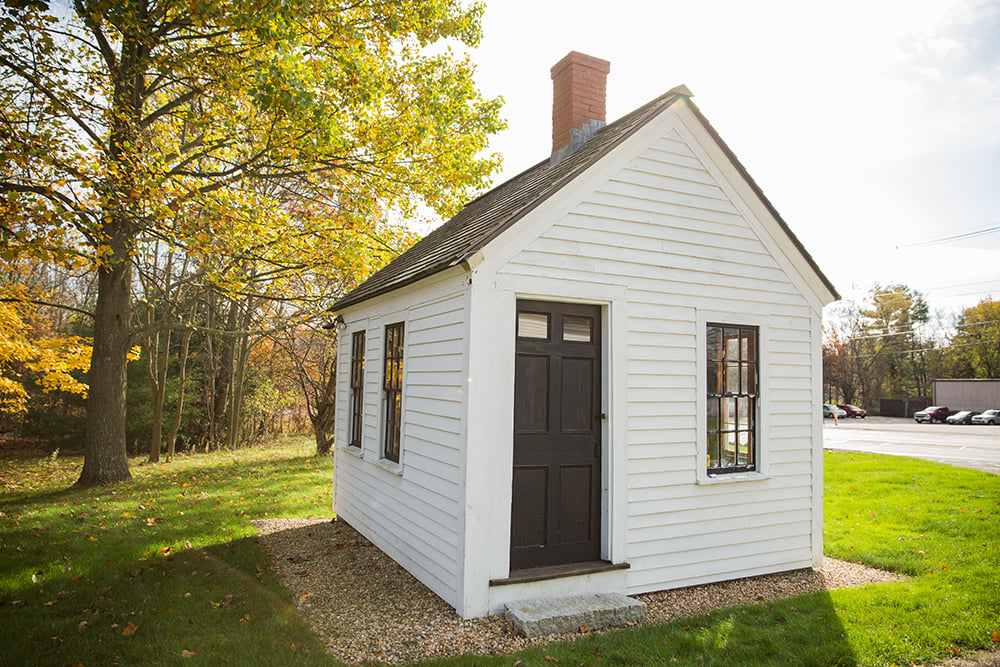
But there were strained relations in the household, caused partly by the fact that Mrs. Crafts was a spiritualist and resisted Mrs. Eddy’s teachings. She also complained that the religious instruction her husband was receiving was insufficient recompense for the cost of room and board.
This unhappy situation necessitated another move on Mrs. Eddy’s part, this time to the quaint town of Amesbury, north of Boston, to the home of Mrs. Nathaniel Webster. Mrs. Eddy remained there through the winter and the following spring, but she and the other boarders had to leave when Mrs. Webster’s son returned home and objected to them being in the house. But Mrs. Eddy didn’t have to move far, for just a few doors away, at 277 Main Street, she found an understanding friend as well as a haven to which she was to return more than a year later. Her hostess, Miss Sarah Bagley, listened with a kind heart to the story of Mrs. Eddy’s wanderings and opened her home to her.
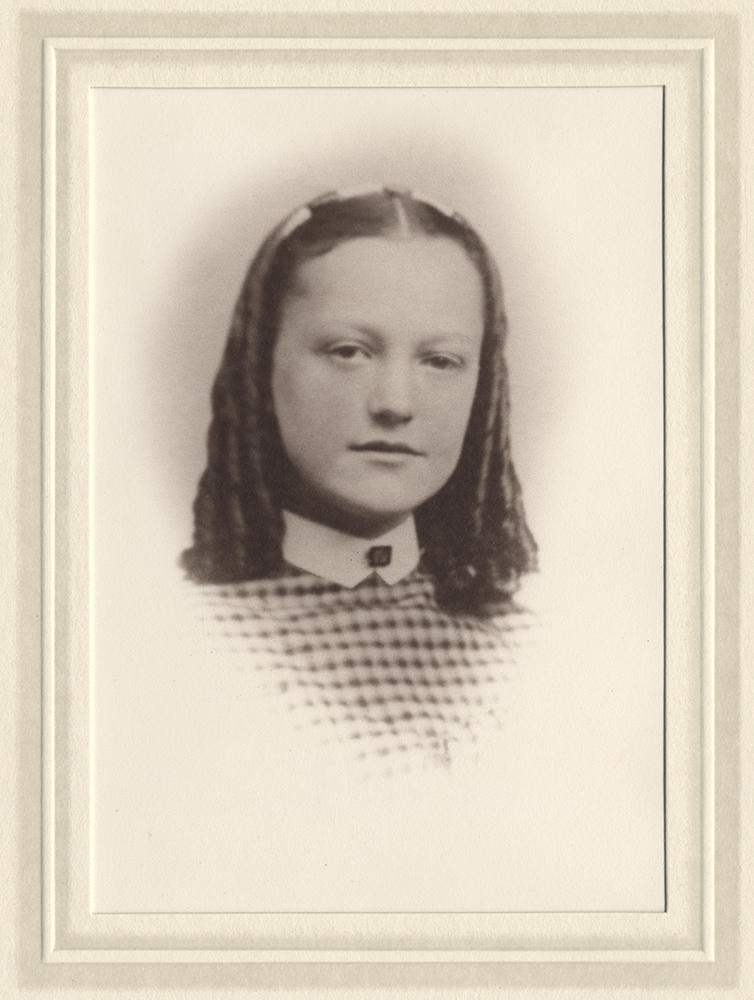
After staying for a short time with Miss Bagley, Mrs. Eddy accepted an invitation from Sally Wentworth to return to the Stoughton area to live with her and teach her the new healing method. This quiet community some eighteen miles south of Boston was an important center of the boot and shoe industry.
When Mrs. Eddy joined the Wentworth household in September of 1868, it consisted of Sally and Alanson; their two daughters, Celia and Lucy; and a son, Charles. Horace, the eldest son, was married and lived a short distance from the family home. Alanson, the father, made a living by farming and shoemaking but was frequently unable to work because of illness.
Lucy Wentworth later described Mrs. Eddy as “a lonely woman past her prime who at the time had seen much of life. In appearance she was very straight of figure, a little above the average in height, with shoulders rather broad for her small waist, small hands and feet, dark brown hair and gray eyes with a faraway look in them, that were very expressive, and under excitement seemed darker than they really were. . . .
“Her wardrobe at the time consisted of a black and white plaid, also a few morning dresses. Her one best black dress was of very fine material, made after the fashion of that day and trimmed with narrow silk velvet ribbon. She kept her clothes very carefully. It made no difference what she wore, there always seemed to be a certain style about her. Her walk was different from any other person, a sort of graceful glide. Many times to please me she would wear my ring and let me wear her pearl one, which to me was a great favor.”
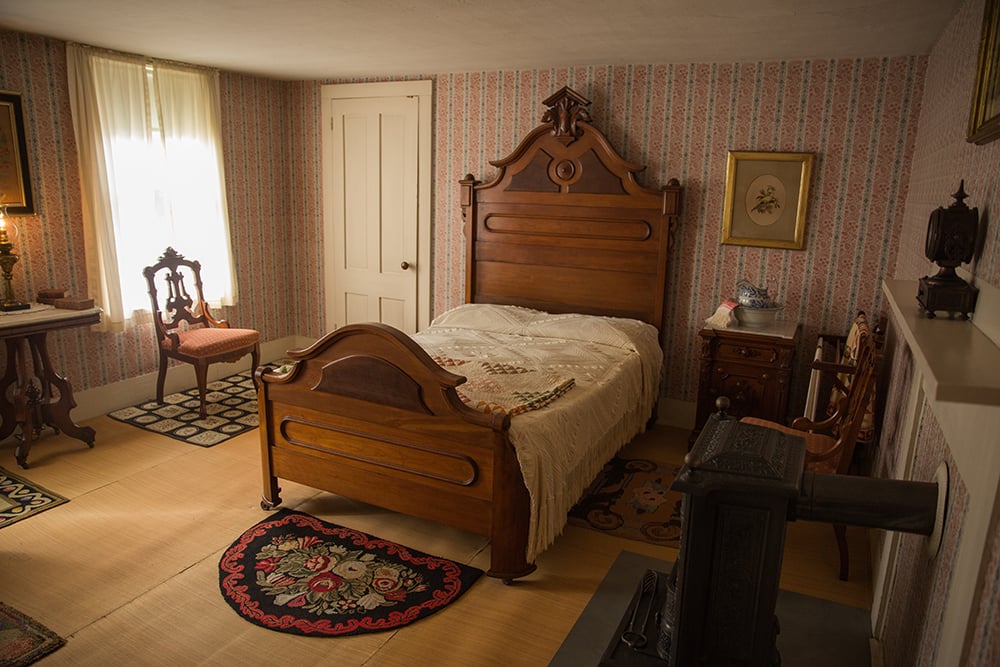
Although Mrs. Eddy frequently mixed with the family, she spent most of her time in her room, studying and writing. Her impelling motive was to fully understand and explain the science underlying her healing. She was a diligent writer, persistently altering and refining her work to express correctly her awakening concepts. But it was not simply a matter of putting down words as they occurred to her. As with any writer, she studied, amplified, edited, and rewrote her manuscripts endlessly.
Because of countless revisions, it is difficult to determine exactly what manuscripts she was working on while in Stoughton, or to what degree of completion she had brought them. There is reason to believe, however, that she had with her, or was working on, three distinct documents.
Mrs. Eddy had been engaged for some time in writing down her ideas on the spiritual significance of the Scriptures. This was one of her major tasks while in Stoughton, and the Wentworths referred to her manuscripts as “Mrs. Glover’s Bible.” Mrs. Eddy later said these Scriptural comments laid the foundation for Science and Health, which was published some six years later. Her other writings centered mainly on a manuscript which was to become her first copyrighted work, “The Science of Man.” Apparently, she brought her work, which was first called “Science of Soul,” to some degree of completion while at Stoughton.
Mrs. Eddy felt it of utmost importance to prove the efficacy of her system of mental healing before fully publicizing it. That she did this is evidenced in a number of healings she brought about during the Stoughton years. She healed James Ingham or serious pulmonary difficulties, for instance, a healing to which he wholeheartedly testified. Among others, she healed John Scott, who was suffering from enteritis and had been given up by his physicians. The healing took place within a few hours.
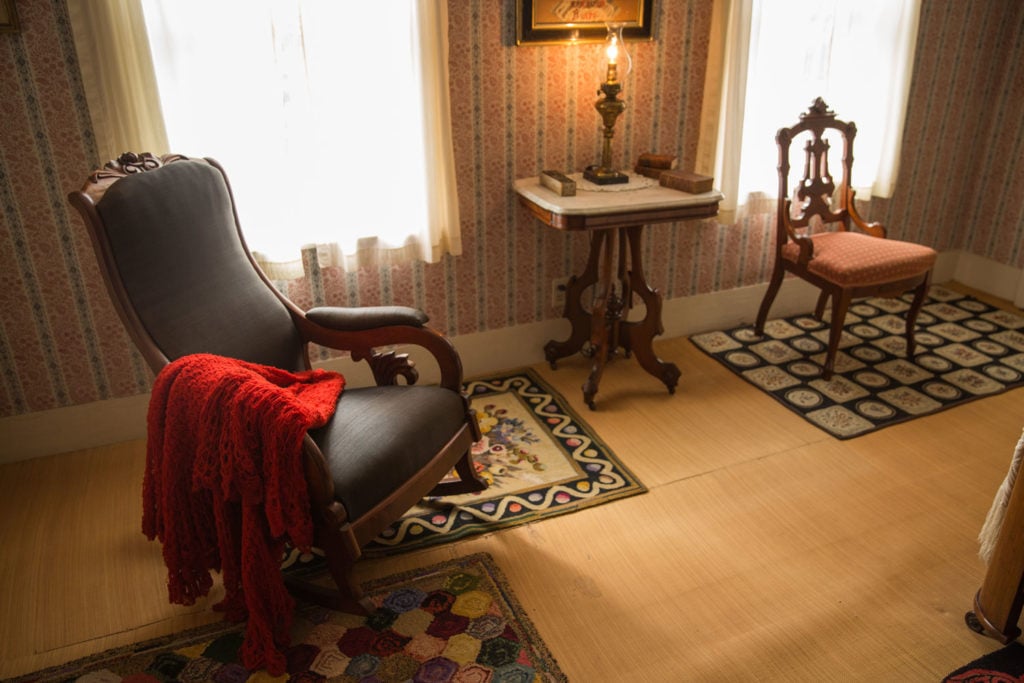
In addition to her study, writing, and healing, another phase of Mrs. Eddy’s work at Stoughton was teaching. When she first began teaching Mrs. Wentworth her system of metaphysical healing, an arrangement was made whereby Mrs. Eddy should receive a small percentage of the income from Mrs. Wentworth’s practice as well as room and board. Sally was apparently successful, for she told Mrs. Eddy later that she had earned $50 a week from her practice. Mrs. Eddy did not, however, receive any financial compensation from either Mrs. Wentworth or her first student, Hiram Crafts.
The Wentworths were a happy, gregarious family, and found their entertainment together, playing games and singing. All had good voices and loved to sing.
Mrs. Eddy entered wholeheartedly into the family discussions and amusements. Her favorite songs while there were “Speed Away” and “Star of the Twilight.”
Mrs. Eddy especially enjoyed the society of young people. In the evening when her work was done she frequently invited the younger Wentworth children and some of their neighborhood friends into her room to read, talk, or play games. Of these occasions Lucy Wentworth said:
“After she had worked for hours she always relaxed and threw off her seriousness. Then she would admit us, my brother Charles and me, and sometimes a school friend of Charles’s. The boys would romp in her room sometimes rather boisterously, but she never seemed to mind it.”
William Scott, a school friend of Charles’s, recalled that as often as two or three nights a week he visited Mrs. Eddy with other young people in the town. “We were in the habit of visiting her to listen to her talks,” he said, “for even then she was regarded by those who knew her as a wonderful woman. She was loved and respected by all who knew her. Some of the most pleasant recollections of my youthful days center in that little room at the Wentworths.”
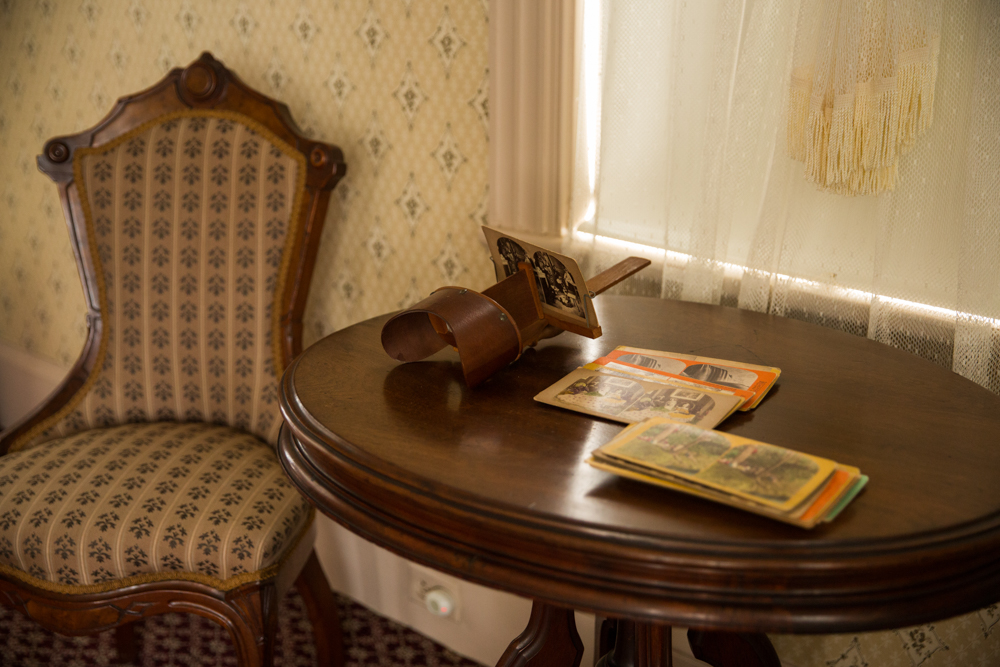
Mrs. Eddy endeared herself to the children, entering heartily into their games of checkers, backgammon, cards, or hunt the thimble. Lucy developed a deep and enduring attachment for Mrs. Eddy and became her constant companion when her work for the day was finished. “I loved her because she made me love her,” Lucy said. “She was beautiful and had a good influence over me. . . . We read good books and talked of spiritual things. She loved nature; she was cultivated and well-bred. Her manners seemed to me so beautiful that I imitated her in everything.”
Despite the pleasant episodes, Mrs. Eddy’s stay in Stoughton was fast coming to a close. Horace Wentworth openly resented her being there and made fun of her teachings, an attitude which led to a very strained family relationship. Mr. Wentworth also seemed to resent his wife’s involvement in healing work, an additional strain on household harmony.
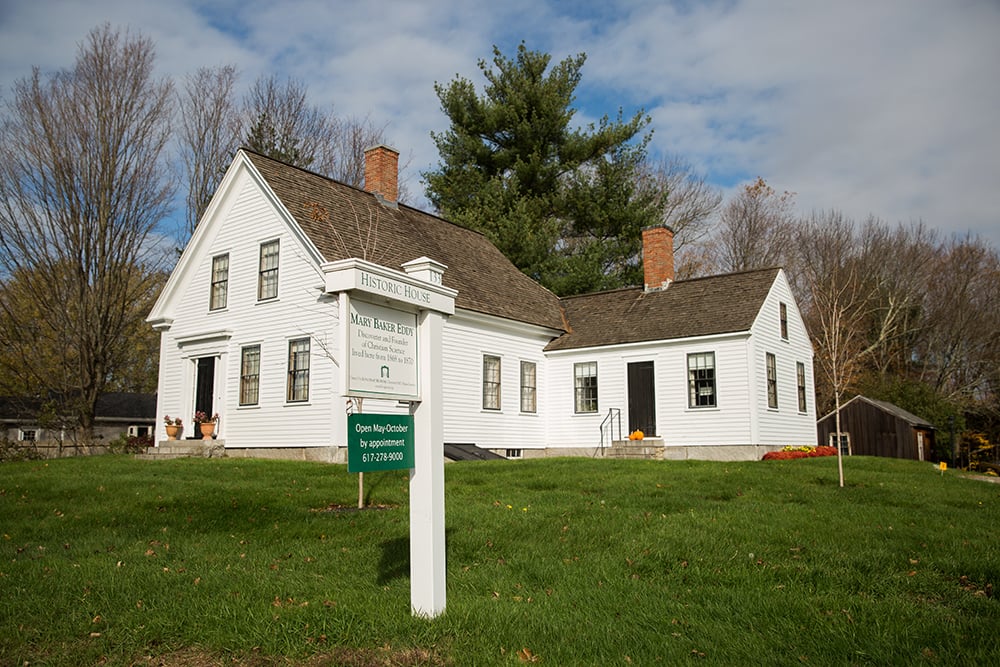
An opportunity to leave came when Mrs. Eddy received a letter from Sarah Bagley inviting her to return to her pleasant home in Amesbury. She accepted the invitation and left the Wentworth household under mutually pleasant terms. Mr. Wentworth took her to the train, found a seat for her in the coach, and expressed regret at her leaving.
Although Mary Baker Eddy’s greatest work still lay ahead of her when she left Stoughton and returned to Amesbury in the spring of 1870, much of the foundation for this work had already been completed. She had diligently studied the Scriptures in search of the answers as to how she had been healed in 1866. She continued to be convinced that all physical effects could be traced to mental causes and wrote down her conclusions, which she said were achieved through logical reasoning, revelation, and her own demonstration. In attempting to teach her system of mental healing to others, she discovered a great deal about how her ideas would be accepted.
Mrs. Eddy experienced trials as well as triumphs during her Stoughton years, which served to strengthen her for the ever greater challenges ahead during the next forty years in publishing her textbook, forming her church, and establishing a worldwide religion.
Notes
This article was published in the 1973 summer Quarterly News, and formed the basis for the Longyear Press book Mary Baker Eddy and the Stoughton Years by Kenneth Hufford. A few minor corrections have been made to reflect current scholarship.
